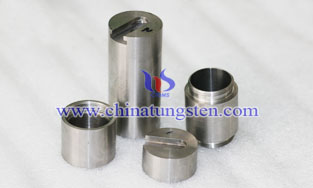Canadian Company updates Tungsten and Strategic Metal Portfolio in Sweden
- Details
- Category: Tungsten's News
- Published on Wednesday, 19 December 2012 17:03
- Hits: 3658
Mr. David Henstridge , President of Tumi Resources Limited, reports that the Company has staked six areas covering tungsten and strategic metals totaling 3,680 hectares in the Bergslagen District of south-central Sweden , each being 100% owned by the Company. The primary commodity on these licences is tungsten (and associated fluorite and beryllium), a strategic metal that has seen its value increase by more than 70% since October 2010 . The tungsten metal market is expected to see future shortages, which are due in part to export restrictions imposed by China . China is the largest producer with 2009 data showing greater than 75% of global production but is soon expected to be a net importer of the metal. By staking these six properties the Company will be well positioned for tungsten exploration in Sweden over the coming years.
Mr Henstridge stated, "I am pleased to report that Tumi has positioned itself as a major player in tungsten and associated strategic metal exploration in Sweden . As the Yxsjoberg mineralization may also contain significant additional values in the form of beryllium, copper and fluorite, the company will initially focus attention on this area, particularly looking at the reprocessing potential of the tailings ponds".
Brief details of the six areas are as follows:
Yxsjon: The Yxsjon licence contains the historic Yxsjoberg mine that is a skarn-hosted tungsten-copper-beryllium deposit. The earliest records of mining at Yxsjoberg date back to the 18th and 19th centuries when the deposit was mined for copper. Scheelite (CaW03) was first identified in 1862, and tungsten was mined between 1918 and 1921. A new concentrator was built in 1937 after the mine had been reopened, and a roasting furnace and new gravimetric separator was added in 1951. A circuit for the production of fluorite (CaF2) concentrate was added in 1956. After closure in 1963 due to poor metal prices, the Swedish State-owned mining company AB Statsgruvor acquired the mine, and the construction of a completely new concentrator and headframe began in 1970. The new plant was put in production in 1972 and was converted from gravimetric separation of scheelite and chalcopyrite to selective flotation in 1977. The mine ended operations in 1989, again due to low tungsten prices. The known mineralization continues to a depth of 750 meters, but geophysical measurements indicate that it is likely to continue down to at least 900 meters (NSG report NSG_89026).
The Yxsjoberg process plant has largely been left untouched since the closure of the mine, and two large ponds containing 2.4 and 2.2 million metric tons of tailings remain (Comet, 1992). Though the remaining known tungsten resource in the mine is limited to approximately 500,000 tonnes of mineralization averaging 0.35% WO3*, the tailings should also be considered for reprocessing. The average grade of the tailings has been estimated to be approximately 0.19% WO3* with additional values to be obtained by recovering beryllium, copper and fluorite. According to a report by Kemakta Konsult AB the total tonnage of beryllium in the tailings may exceed 920 tonnes at an average grade of approximately 0.02% beryllium*. As the beryllium price is in around $930 USD /kg the additional metal value may be significant.
Gussarvet: Flood et al, 1981 report (Grb 232) inferred historical resources* of 200,000 tonnes at 0.34% WO3 following a 15 hole diamond drill program in which drill hole GAH 6 intersected 7.75 m averaging 0.64% WO3 and 31.3 m grading 0.37% WO3. The tungsten mineralization occurs in skarn and epidote-quartzite associated with an approximately 100 m wide NE-SW trending carbonate horizon. According to the 1981 report, the SW end of the mineralization appears to be cut by a fault, and one of our objectives will be to locate the extension of the mineralization on the other side of the fault. The report also suggests that the mineralization may be open towards depth, thus making this a high priority target. The Hällsjön-Gussarvet area remains under-explored and will be one of the first areas to be explored by the Company to confirm and increase the historical resource.
Wigstromsgruvan: The licence area contains a small historic tungsten mine that fed ore to the nearby but now closed Yxsjoberg mine mill. Scheelite and fluorite mineralization occur in garnet-diopside skarn within mafic metavolcanics. Production figures reveal 130,456 tonnes of ore grading 0.28% WO3 were shipped to the mill. Ore was produced from a slot-cut approximately 200 m long and up to 50 m deep. Records suggest the mineralization remains open along strike and at depth, hence significant mineral resources remained in place at the time of the mine closure.
Sandudden: Scheelite and fluorite ore from a test-pit was also shipped to the Yxsjöberg mill with mineralization having similar characteristics to that found at Wigstromsgruvan. Production from the test-pit was 17,080 tonnes grading 0.22% WO3, mined from two benches to a depth of 10 m. Kontio, et al, 1979 report inferred historical resources* in the area of 422,000 tonnes at a grade of 0.25% WO3 and 5% CaF2. The Sandudden area remains under-explored and will be one of the first areas to be explored by the Company to both confirm and increase the historical resource.
Gustavsberg: The licence area contains a historic iron mine in the Riddarhyttan area of central Sweden . Documentation from the mine indicated that copper and tungsten mineralization was found in the skarn adjacent to the iron ore. Mine geologists reported discoveries of "up to football-sized patches of scheelite" in the footwall skarn. The mineralization is located in a N-S to NW-SE trending band of thinly bedded/banded metavolcanic rocks of alternating felsic and mafic nature. No modern exploration for tungsten has been done in the area although prospectors have been reporting scheelite occurring in the remnant waste dumps at the mine; a recent inspection by Company geologists discovered scheelite in excess of 4 cm in size. This information suggests the Gustavsberg licence area to be a prime target for modern tungsten exploration.
Gensgruvan: A small mine called Molybdengruvan operated within the licence area for a few years in the 1940's. Production figures from 1944 record 1,600 tonnes of ore were mined with an average grade of 0.3% WO3. Local geological surveys have unearthed a number of untested outcrops containing scheelite mineralization. Also, a large number of mineralized boulders have been discovered in the area, but the source has not been located.








 sales@chinatungsten.com
sales@chinatungsten.com